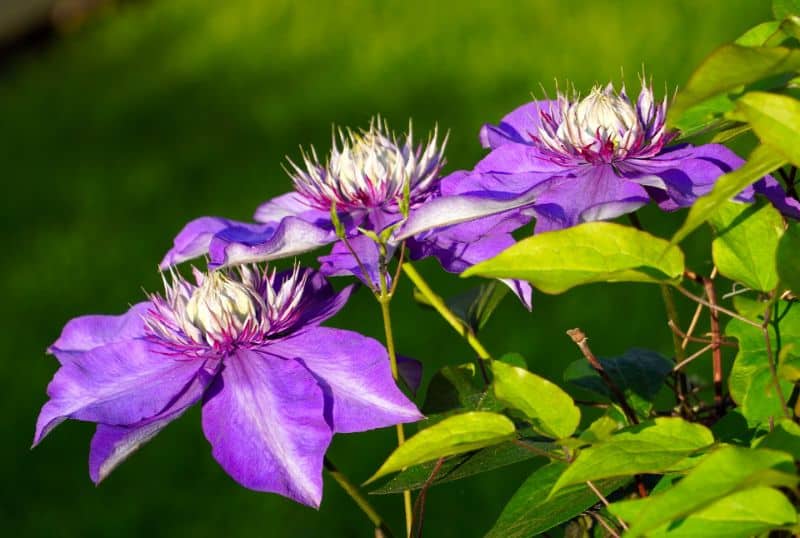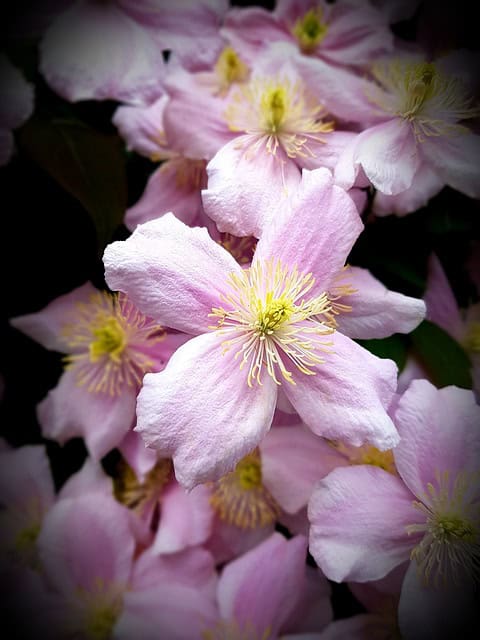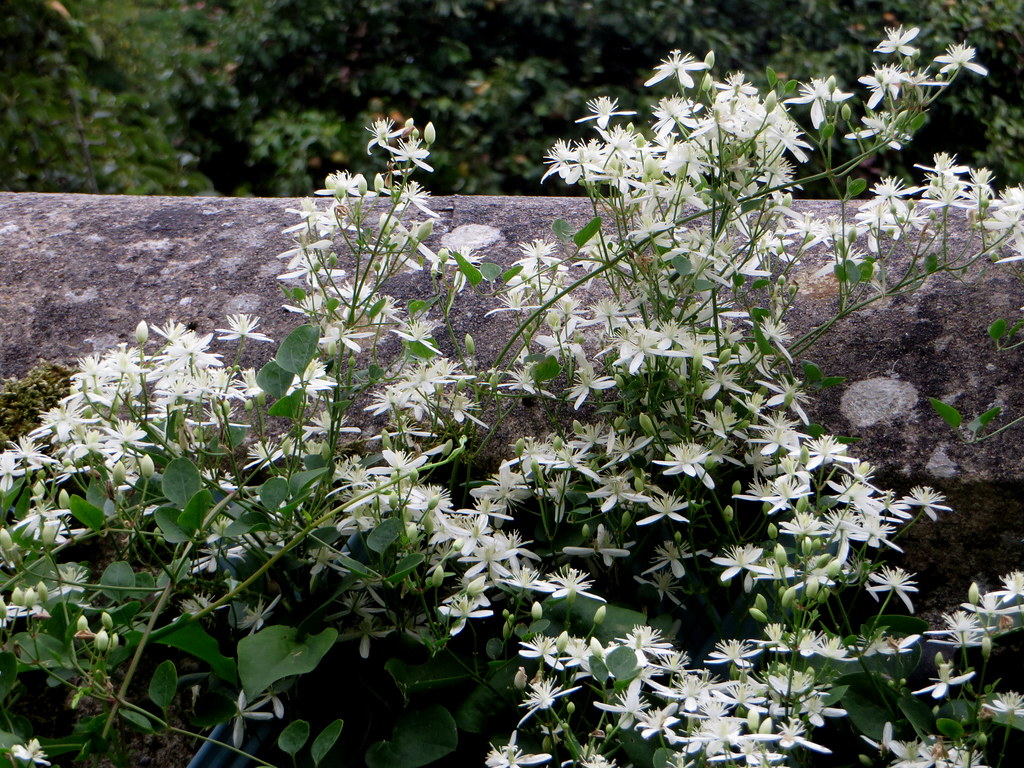In this extensive guide, we will explore the best places to plant clematis, how to care for it in various environments, and tips for achieving the most breathtaking blooms.
Understanding Clematis

Before diving into specific planting locations, it’s important to understand the unique characteristics of clematis. These flowering vines are known for their climbing ability, using leaf-stalks to grab onto supports like fences, trellises, or other plants. With varied flowering times, some clematis bloom in late spring, while others produce flowers in summer or fall. The flower colors range from deep purples and hot pinks to whites and pastels.
These plants thrive in various settings, but their ultimate success depends significantly on their environment – the right light, substrate, and moisture levels can make all the difference. So, where should you plant these captivating climbers? Let’s unfold the secrets of ideal clematis planting locations.
Ideal Conditions for Planting Clematis
Soil Requirements

One of the foremost considerations when planting clematis is the type of soil. Clematis prefers well-draining soil with a rich organic matter content. A pH level between 6 to 8 is generally ideal. Heavy clay or sandy soils can pose challenges for root growth, so amending your soil with compost or well-rotted manure will provide the nutrients needed for healthy plant development. Before planting, assess your soil quality and make improvements as necessary to create an optimal environment for these delightful vines.
Light Requirements

Clematis is unique in its light requirements. Most species prefer to be positioned in a spot with full sun, ideally receiving at least six hours of sunlight per day. However, while the tops of the plant enjoy the sun’s rays, it’s essential to keep the roots cool. This contradictory requirement means that placing clematis at the base of a wall or an arbor where it can climb up into the sunlight is ideal.
In regions with extremely hot summers, consider planting clematis in partial shade to prevent leaf scorch. Morning sun with afternoon shade is particularly beneficial. This approach allows the plant to bask in the gentle warmth of the morning while keeping the roots from overheating later in the day.
Where to Plant Clematis: Specific Locations
1. Trellises and Arbors

One of the quintessential places to plant clematis is at the base of a trellis or arbor. These structures provide the perfect support for clematis to climb and display their full beauty. Ideally, choose a trellis made of a durable material that will withstand the weight of the plant as it grows. Planting clematis at the foot of a sturdy trellis allows the plant to showcase its blooms in an upward fashion, creating vertical interest in your garden.
Moreover, arbors can act as beautiful entry points to your garden space. As clematis climbs over an arbor, it can frame a pathway or seating area, creating a welcoming atmosphere. When planting, ensure the supporting structure has enough height and strength to accommodate the various clematis species you may choose, from the delicate but vigorous ‘Nelly Moser’ to the formidable ‘Jackmanii.’
2. Fences

Fences provide excellent support for climbing plants, and clematis is no exception. Planting clematis near a fence can create an attractive living backdrop, transforming a mundane barrier into a visually stunning display. Depending on the type of fence, clematis can grow unapologetically, enveloping it in vibrant flowers.
When planting beside a fence, consider its material. Wood, vinyl, and chain link can all serve as good supports. Clematis loves to attach itself to the fence, but for added stability, you might want to install wire or netting for the plant to grasp as it grows. Moreover, if your fence is painted or treated, it’s best to ensure it’s safe for plants to prevent toxicity issues.
3. Walls and Sheds

Walls and the sides of structures are excellent spots for planting clematis. By hugging vertical surfaces, clematis can soften the harsh lines of buildings and add a natural touch to more utilitarian spaces. Choose a sunny section of the wall, ideally facing south or west, for optimal flowering potential.
Do be mindful of the proximity to the wall. Ideally, allow the clematis to have at least 12 inches of space for proper air circulation. Installing hooks or wires can offer additional support and give the plant the opportunity to climb freely, enhancing the seasonal beauty as it blooms against a backdrop of bricks or siding.
4. Within Mixed Garden Beds

Clematis can also thrive beautifully within mixed garden beds. When strategically placed among perennial flowers and shrubs, it can create a tapestry of color and texture. By selecting companion plants with different blooming times, you’ll ensure a continuous visual spectacle throughout the seasons, with clematis gracefully intertwining among its neighbors.
For instance, combining clematis with lower-growing perennials like daylilies or sedum lets you create a visually layered look. Consider the colors and heights of the neighboring plants to create harmonious arrangements that complement the clematis. Grouping plants with similar moisture and light requirements will promote healthy growth, creating a thriving ecosystem in your garden.
5. Container Gardening

For those with limited space or who wish to add versatility to their planting, container gardening is an excellent option for clematis. Pots enable gardeners to move plants as needed to capture the best light or protect them from extreme weather.
When planning to grow clematis in pots, remember that the container must be large enough to accommodate the plant’s roots—at least 12 inches in diameter is recommended. Ensure your container has adequate drainage holes to prevent waterlogging, as clematis does not like to have wet feet. Opt for a lightweight potting mix with compost or organic material to feed the roots.
6. Pergolas and Gazebos

For a romantic and enchanting atmosphere in your outdoor space, consider planting clematis near a pergola or gazebo. These structures can create a lovely retreat, and clematis vines climbing up and over them can provide a shaded area cloaked in flowers.
Selecting the right clematis for this setting is essential; vigorous varieties have the potential to cover significant areas quickly. You may choose a specific color palette, such as purples and whites, to create a striking contrast with the outdoor structures and foliage. Regular trimming will encourage new growth and maintain control, ensuring a beautiful environment that doesn’t overshadow the structure beneath.
7. Near Water Features

Another beautiful locale for planting clematis is near water features like ponds or fountains. The cool, moist environment can be beneficial for many clematis varieties, as it provides adequate humidity while also allowing accessibility to sunlight.
Choosing a clematis that is tolerant of moisture will enhance the picturesque landscape around the water feature. Mixing clematis with other moisture-loving plants can create a natural, lush border that softens the edges of any hardscaping. The reflection of water, combined with the colorful blooms of clematis, can create a serene and vibrant atmosphere, making the garden a perfect escape.
Tips for Successful Clematis Care in Various Locations
Watering and Drainage
Regardless of where you plant your clematis, watering is a key aspect of care. As a general rule, keep the soil consistently moist, particularly during dry spells. While clematis dislike overly wet conditions, regular watering helps establish deep roots, essential for thriving plants.
Be sure to incorporate mulch around the base of the clematis, regardless of your planting location. This will not only keep moisture in, but mulching also helps keep the roots cool, providing a stabilizing layer of protection against harsh conditions.
Pruning
Pruning is another critical factor in ensuring your clematis flourishes, and the technique differs significantly depending on the species. Knowing whether your plant is a Pruning Group 1, 2, or 3 will determine how aggressively you should trim each year. Group 1 blooms on old wood and requires minimal pruning, while group 2 blooms on both old and new wood and benefits from a light trim. Group 3, blooming solely on new wood, should be pruned back to about 18 inches in spring to encourage vigorous growth.
Fertilization
Fertility is key to vibrant blooms, especially in mixed garden beds or containers where nutrients can be quickly depleted. Fertilize clematis in early spring with a balanced, slow-release fertilizer. During the growing season, a monthly application of liquid fertilizer can give an extra boost, particularly if the plant seems to be growing sluggishly.
Support Structures
No matter where you place your clematis, providing adequate support is crucial. Ensure that the support structures are stable and high enough to accommodate the varying growth patterns of your chosen clematis species. Keep in mind that even if the clematis appears secure, regular inspection and maintenance of the support system may be needed as the plant matures.
Conclusion
Clematis vines can bring an extraordinary level of beauty and vibrancy to any garden. By selecting the right location—whether it’s a trellis, wall, mixed garden bed, or container—you can create a stunning visual display that will be the envy of your neighborhood.





